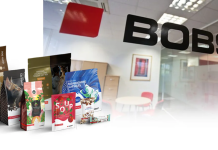By Andrew Griffith, product manager: office products at Konica Minolta South Africa (KMSA)
Organisations wanting to toe the compliance line when it comes to regulatory requirements linked to PoPI and FICA, must factor paper-based documentation into their governance, risk and compliance strategies, or run the risk of non compliance.
A recent study by digital imaging market data specialist, InfoTrends, uncovered that more than 35 percent of documentation pertaining to health/medical insurance policy applications is paper-based only, while a staggering 50 percent of applications within this field are done via a combination of paper and electronic means. The study’s figures for the life insurance and annuity sector were also surprising; more than 41 percent of applications are paper-based and over 47 percent are a combination of paper and electronic.
This certainly emphasises the fact that a completely paperless working environment is unlikely for any business, but also underlines the importance of business process management when it comes to the capturing, organisation, storage and distribution of this paper-based information, particularly from the perspective of both compliance and security. It is a fact that the existence of paper within a business process is typically a roadblock and will hinder business processes at large.
Paper can also compromise privacy, compliance and security initiatives within organisations. So, the options are either to eliminate paper which we already know is not an immediate possibility or to shorten its lifecycle. And while mobile initiatives, for the capturing of e-signatures, are a potential avenue towards the elimination of paper, these are also currently costly and can also be disruptive.
The preferable approach would be through business process automation, where paper-based information is captured early in the process, allowing companies to then destroy the paper documents, thus shortening their lifecycle and subsequently, the lifecycle of the information contained therein.
Organisations that have gone the route of adopting automation solutions have seen improvements related to compliance and the security of confidential information, as well as enhancing and streamlining processes and communication. In fact, many businesses have managed to improve their compliance initiatives by more than 50 percent, proving that tying together automation opportunities to compliance and privacy objectives may be a key strategy to securing these solutions.
This is where document management companies like Konica Minolta South Africa are well placed to assist. While the concept of managed print services may now be better defined as managed content services, the integration of a document management solution into a business’ existing workflow and collaboration processes will not only incorporate paper into these business processes, it will also help to improve value, flexibility, while simplifying regulatory compliance and enhancing security measures.
The role of the office automation supplier has evolved far beyond the transactional, one-dimensional provision of copier hardware to the actual management of data; from the capturing of information from multi-channel inputs, the classification of the captured data and workflow integration to its safe, secure storage and analytics.
With these additional integrated services, a printing device can now provide immense value to a business, easing the burden of fulfilling stringent multi-regulatory rules and retention requirements while keeping records safe from loss, destruction or tampering.





















